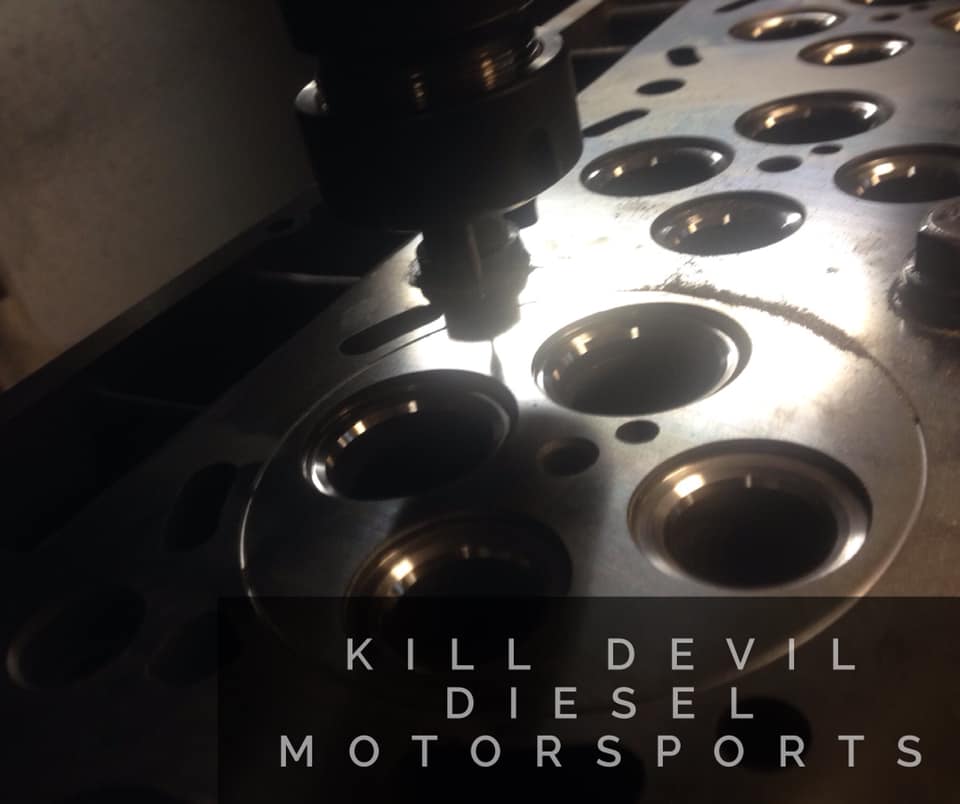
About KDD Cylinder Head O-Rings, and why they're used
We often get asked about or process and more about O-Rings and our process behind them.
Frequently asked are questions like:
"What’s the difference between O-rings and Fire-rings?"
"Do I need O-rings for my application?"
"Are O-rings only for race engines, or are they safe for the street?"
"Will they work with MLS gaskets?"
“Are any gasket modifications required?"
The answer –
Some people use the terms “O-rings” and “fire rings” interchangeably, but generally in a fire ring setup technically the fire ring itself is the only seal/barrier between the block and the head; whereas with an O-ring setup the O-ring wire simply applies extra pressure to the head gasket, but it’s the head gasket that still does the sealing. We’ve tested both setups and our results lead us to prefer O-rings for most modern diesel applications. Several years ago we experimented with fire rings in a collaborative R&D project with KC Turbos and others. Ultimately, we found that the O-ring setup provided more reliability and easier install than fire rings did in our testing. We have been using O-rings ever since on Powerstroke, Duramax and Cummins.
We developed the O-ring system we use in very high horsepower applications, but we've found that they work very well on the street as well. In fact over 95% of our customers from all 50 states and Canada are looking for solutions for their street trucks built for work and play.
A little known fact is that MLS (Multi-Layered-Steel) head gaskets are comprised of spring layers and shim layers, found on most modern diesel engines. By utilizing an O-ring setup you can still take advantage of the "spring" or “embossed” layers of the MLS gasket. These spring layers aid in keeping pressure applied to the head gasket sealing area while the engine expands and contracts under cylinder pressure and temperature changes. Fire rings tend not to have this same flexibility, and some fire ring suppliers require a periodic re-torque to maintain clamping pressure on the sealing area. We specifically DO NOT recommend any retorque on our o-ringed heads. Most MLS gasket manufacturers will tell you that their gaskets aren't made to work with o-rings, which is true - they didn't design their gaskets around our O-rings - however our O-ring system was in fact designed to work with their gaskets. No gasket modifications are required, our O-ringed heads install just like factory heads to the same torque specs; no special block prep is required, simply ensure a clean, dry and flat block surface.
On KDD’s 6.0/6.4/6.7 Powerstroke and 5.9/6.7 Cummins cylinder heads, a receiver groove is machined into the deck surface (head gasket surface) around the combustion area. A hard stainless spring steel O-ring wire is pressed into the groove, but protrudes several thousandths from the groove and works in concert with the "embossed" layers present in all MLS gaskets (Ford, GM, Cummins, Mahle, Victor, Felpro, Cometic, etc). The O-ring essentially reinforces what the embossed layers were designed to do - apply more pressure 'through' the layers of the gasket – especially helpful for the uneven clamping force on engines with only 4 head bolts per cylinder, such as the 6.0/6.4 powerstroke engines. We O-ring all of our cylinder heads because it eliminates head gasket failure – there are no draw backs to our O-ring design, and it helps to give everyone peace of mind for any application, on the street, heavy hauling, and at the track.
Here’s a couple good articles with even more details on MLS gaskets, and some tips and tricks on installation:
https://www.rodauthority.com/tech-stories/engine/choosing-mls-head-gaskets/?fbclid=IwAR1tre0iaosRPKULJc2MyOZhSmhLHfjekXS7ij2o1YfaD16PQ63Y7DlGXro
https://www.rodauthority.com/tech-stories/engine/mls-head-gaskets-0219/?fbclid=IwAR1lmo1U7n8F3zXcYKPqOogxMmR0T0ri9OKFyd8NmSosjDsUrlwzSrhrm9Y
